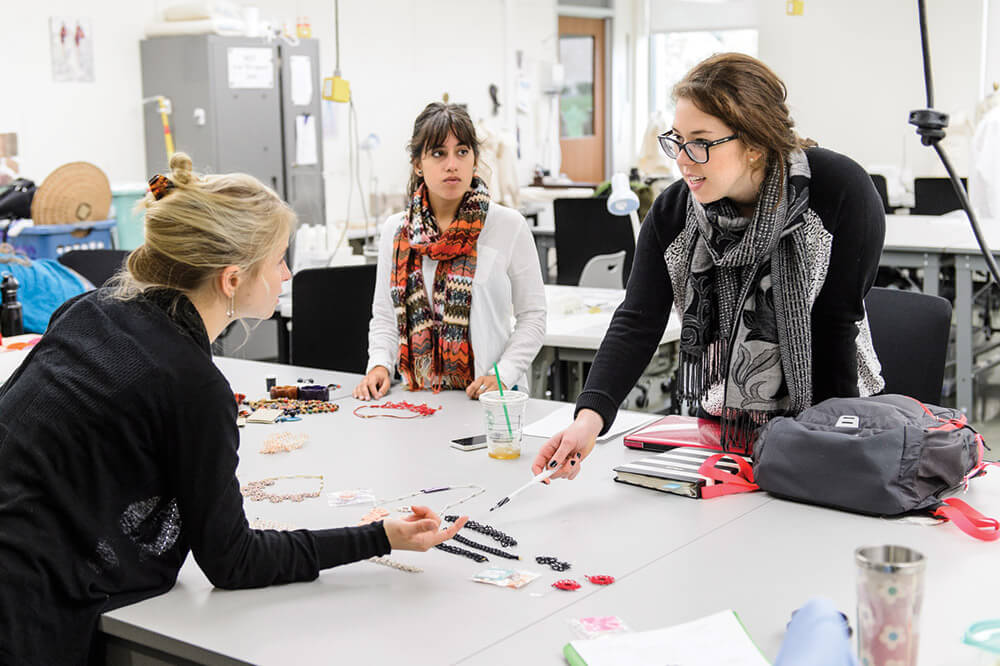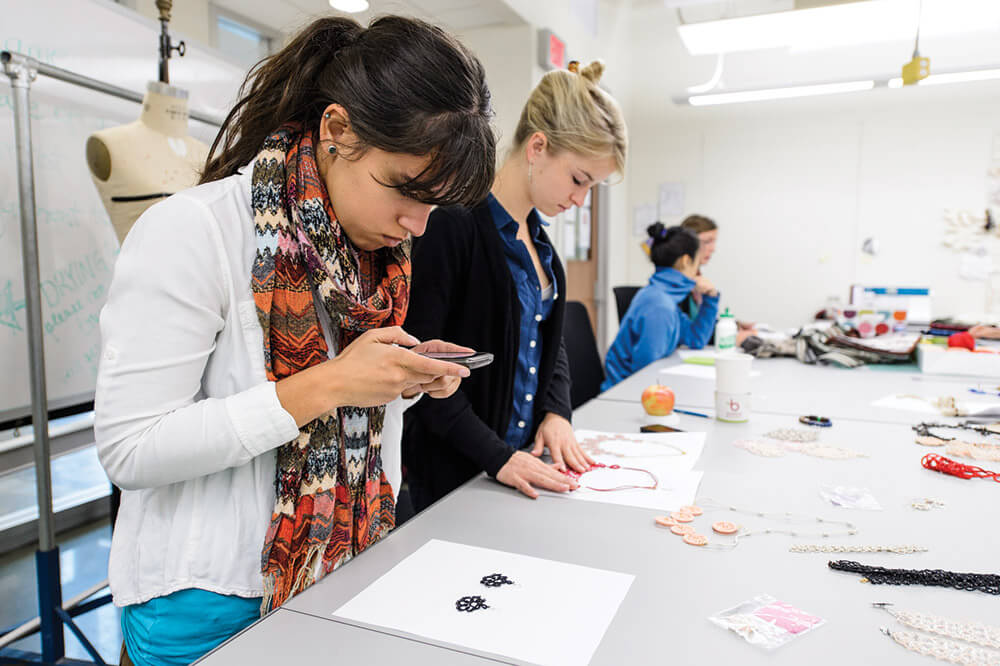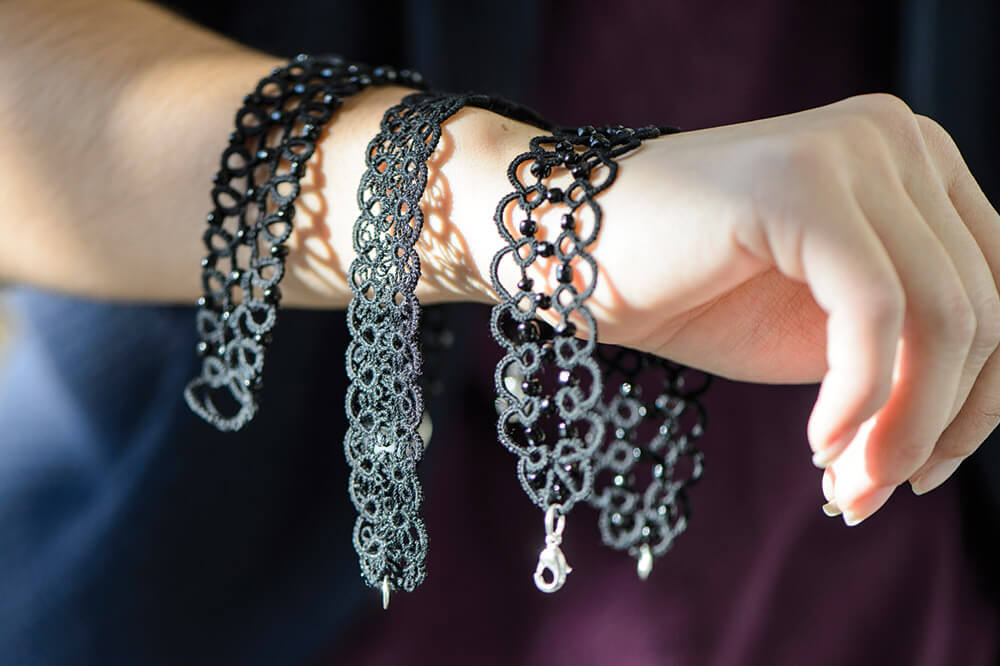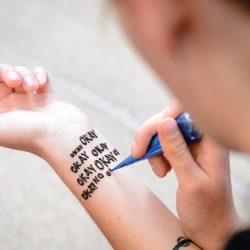Design Studies 501: Global Artisans and Pragmatic Design

Students explored ways to tailor the artisans’ bracelets, such as shorter lengths, to accommodate the U.S. market. “[Some artisans] think Americans are huge,” says former UW student Kateryna Gudziak (at left).
The course, part of a project funded by the Reilly Baldwin Wisconsin Idea Endowment, focuses on identifying viable markets in the United States and growing a sustainable income for the artisans and their families. Students were paired with small co-ops — mostly women working from their homes — in each of the three countries.
The class split into two groups, with one concentrating on fabrics and the other on jewelry. At the start of the semester, the groups made small adjustments to existing products. “It’s kind of working in between design and quality control,” says Kateryna Gudziak ’14, who graduated after fall semester.

Fernanda De La Torre x’15 snaps an image of earrings to determine necessary adjustments. Technology played a key role in the class. Students sent recorded demonstrations to artisans and communicated with them over Skype.
By the end of the semester, students used their problem-solving skills to tackle larger projects, such as creating products that use each country’s traditional fabrics.
The class teamed up with consumer science students to sell the final products at the Robin’s Nest Café in the School of Human Ecology, and the group hopes to add online sales.
While new students will work on designs with the same artisans this fall, Carolyn Kallenborn ’97, MFA’00, an associate professor of design studies who teaches the course, wants to see the artisans eventually outgrow the class. “I think that would be a wonderful success story if they didn’t need us anymore,” she says.

Toward the end of the semester, the class started receiving finished products, such as these lace bracelets from an artisan group in Presa de Barajas, Jalisco, Mexico. The artisans had initially used lace to make doilies, but the students suggested that they try making jewelry with lace and beadwork instead.
Published in the Spring 2015 issue



Comments
No comments posted yet.